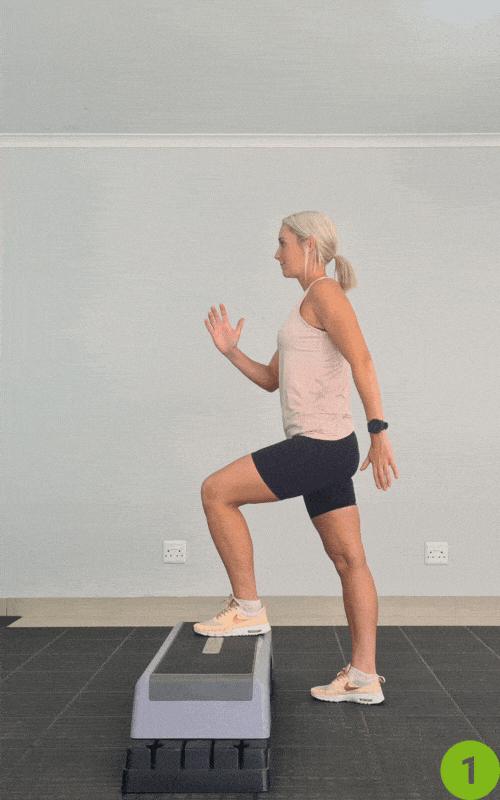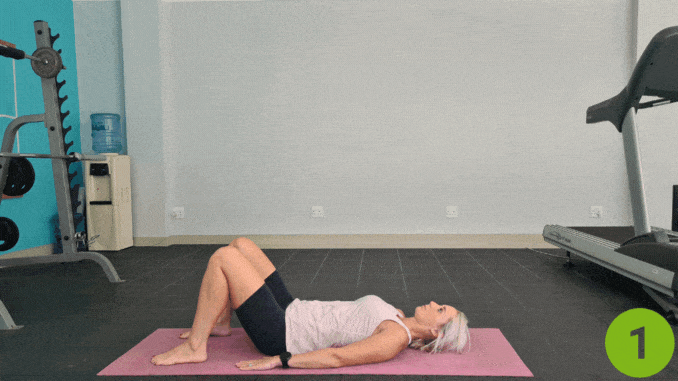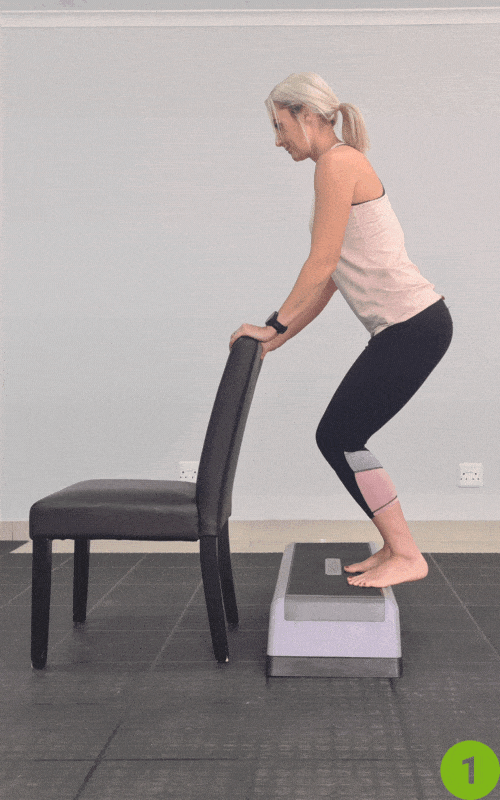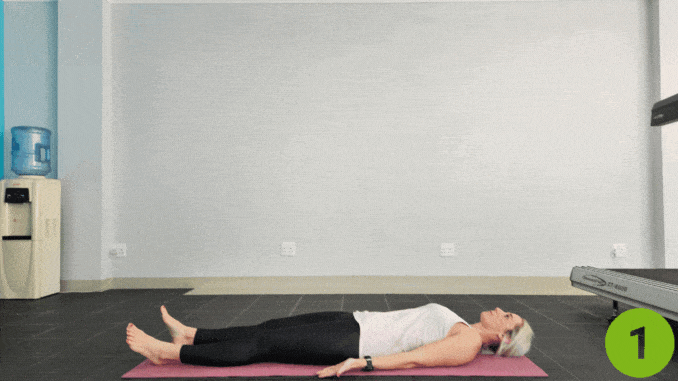Knee and lower back pain are common reasons clients struggle to stay active or drop out of training, which is why programs like Mike Robertson’s Bulletproof Knees are essential for long-term success.
Whether it’s from poor posture, past injuries, or aging, these issues can make everyday movements painful and limit progress.
That’s why bulletproofing is essential. By using smart assessments, corrective exercises, and targeted training strategies, fitness professionals can prevent injuries and help clients move confidently.
It’s not about being invincible—it’s about building strength, stability, and then resilience.
When clients feel better and move better, they stay motivated, consistent, and then get better long-term results.
Pain-free training, as emphasized in Mike Robertson’s Bulletproof Knees, supports sustainable progress.
As knee pain [1] severity increases, so does the risk of dangerous falls and fractures.
1. Wall Sits

- Begin by standing with your back against a wall, maintaining good alignment with your head, shoulders, and then hips.
- After that, slide down into a sitting position, keeping your knees at a 90-degree angle.
- Extend your arms at shoulder height and then hold this position for 20-30 seconds, ensuring your core is engaged and your back remains flat against the wall.
- Return to the starting position and then repeat the movement 3-5 times.
2. Step-Ups

For this exercise, you can utilize the plyometric box, stairs, or bench for support if needed.
- Stand in front of the box or a stair.
- Place your right foot on top of the box, stair, or bench, then push yourself up onto it.
- Then slowly step down with your left foot.
- Next, lead with the left foot and alternate sides throughout the exercise.
- After that, repeat the movement.
3. Lunges

- Begin in an upright standing position, maintaining good alignment with your head, shoulders, and hips.
- Step one foot forward and lower your hips until both knees are bent at about a 90-degree angle, with your back knee resting on the floor.
- Place your hands on your hips or hold them at your sides to maintain balance.
- Hold this position for several deep belly breaths, in through your nose and out through your mouth.
- Push back to the starting position and repeat the movement 10-15 times on each leg.
4. Glute Bridges

- Lie on your back on the floor with your knees bent and feet flat on the floor.
- After that, raise both hands towards the ceiling.
- Contract your core and then press through your heels to lift your hips towards the ceiling, forming a straight line from your knees to your shoulders.
- Hold the position briefly, then slowly lower your hips back to the starting position.
5. Bent Knee Calf Raises

For this exercise, you can utilize the wall or the back of the chair for support if needed, and a plyometric box.
- Begin in an upright standing position in front of a chair with your feet hip-width apart, maintaining good alignment in your upper body.
- Then, place both hands on the back of the chair for support.
- After that, engage your core.
- Step on the box and stand on it.
- Bend the knee slightly, and raise your heels on both feet, holding this position for a couple of seconds.
- Lower your heels back down to the starting position and then repeat the movement.
6. Lateral Band Walks

- Begin in an upright standing position with a resistance band placed around your lower legs, just above your ankles.
- Bend your knees slightly and push your hips back into a mini squat, keeping good alignment with your head, shoulders, and hips.
- After that, engage your core.
- Take a small step to the side with one foot, followed by the other foot, maintaining constant tension in the band.
- Repeat the movement for 3 sets of 5 steps in each direction.
7. Heel Slides

- Begin by lying on your back with your legs extended, maintaining good alignment with your head, shoulders, hips, and then feet.
- After that, engage your core.
- Slowly slide one heel toward your glutes, bending the knee while keeping your foot in contact with the floor.
- Pause briefly, then slide your heel back to the starting position.
- Repeat the movement on the opposite leg.
- After that, complete the movement for 3 sets of 5 repetitions on each leg.
Meet Mike Robertson
Mike Robertson, MS, BSc, CSCS, is a world-renowned performance coach and then injury-prevention expert.
He’s the co-owner of Indianapolis Fitness and Sports Training (I-FAST), one of the top gyms in the U.S., and the founder of Robertson Training Systems.
With over two decades of experience training athletes, active adults, and rehab clients, Mike blends cutting-edge sports science with real-world coaching.
Furthermore, his expertise in biomechanics, corrective exercise, and strength programming has made him a go-to authority for trainers looking to prevent injuries—especially in the knees and lower back.
When it comes to keeping clients pain-free and performing at their best, Mike doesn’t just teach the methods—he pioneers them.
Understanding Knee Anatomy
- Bones: Thigh bone (femur), shin bone (tibia), and kneecap (patella) meet at the knee.
- Cartilage: Soft, smooth padding that stops bones from rubbing. The meniscus acts like a cushion.
- Ligaments: Strong straps that hold the knee together and keep it steady.
- Muscles & Tendons: Muscles move the knee; tendons connect muscles to bones.
Why This Matters:
- The knee functions in coordination with the hips and ankles, which must remain strong and then mobile to prevent compensation and injury
- Knowing how your knee works helps you prevent pain and injuries.
Mike Robertson’s program teaches:
- How hips and ankles affect knee health
- How to spot and then fix imbalances
- Simple steps to protect your knees long-term
Benefits of Knee Exercises
- Improve joint stability
Using multiple joints—hip, knee, and ankle—together helps muscles work in sync. This improves overall control and reduces the chance of reinjury after ACL surgery or trauma.
- Prevent poor muscle coordination.
Training muscles in isolation can lead to imbalances and neuromuscular inefficiency. Full-body leg exercises help avoid this by teaching muscle groups to work together effectively.
- Reduce knee pain
Regular knee exercises help loosen stiff joints and improve blood flow. This can ease pain and make daily movements more comfortable.
- Strengthen leg muscles
Knee exercises strengthen the muscles surrounding your knee, such as the quadriceps and hamstrings, which provide better support and reduce strain on the joint.
- Improve flexibility
Dynamic stretching and mobility work improve range of motion and ease of movement in the knees, making everyday activities feel smoother.
- Prevent injuries
Strong, flexible knees are less likely to get hurt. Exercises help prepare your body for walking, running, or lifting without strain.
Conclusion
Knee pain can stop people from moving, training, and feeling their best. But with the right exercises and smart movement, you can build stronger, more stable knees.
Mike Robertson’s program teaches how to fix weak spots, improve balance, and then reduce pain.
The goal isn’t perfection—it’s maintaining activity without pain, just like the principles in Mike Robertson Bulletproof Knees.
Again, when your knees feel strong, you move better, stay motivated, and get lasting results.
Simple steps, such as glute bridges, heel slides, and band walks, can help protect your knees in the long term.
Furthermore, take care of your body now, and you’ll stay pain-free, confident, and moving well for years to come.
Tip for Bulletproofing Your Knees
“Add exercises that use your full range of motion—not just partial squats. Your knees get stronger when you train them through their complete movement, not just in the same gym positions all the time.” — Undermostalloy, Reddit commenter
Don’t let discomfort control your life—Knee Pain Solved is your path to lasting relief! Join thousands who have regained their mobility and confidence. Start your journey with Knee Pain Solved today!
Frequently Asked Questions
What is Bulletproof Knees, and who is it for?
Bulletproof Knees is a detailed step-by-step manual and DVD program by performance coach Mike Robertson. It’s designed to help you assess your movement, restore function, and build strength for long-term knee health. Whether you’re an athlete, weekend warrior, or just want to move through life and workouts without pain, this program provides a comprehensive guide to knee rehabilitation and strengthening. It offers hope and a proven path to recovery for anyone dealing with knee pain from injuries, aging, or overuse.
Do I need special equipment or a gym to follow the program?
No gym required! The program is designed to be done effectively at home using bodyweight movements and simple tools like bands or foam rollers. Mike includes detailed modifications in the manual, so you can adapt each pose or exercise to your level, without needing fancy gear.
Will this program work if I’ve had knee surgery or chronic pain for years?
Yes. Whether you’re in recovery, post-surgery, or just tired of dealing with lingering pain, this program is built to meet you where you are. With its step-by-step progression, you’ll safely strengthen and stabilize your knees. The details matter—and this program explains every move so clearly, you’ll know exactly what to do and why.


